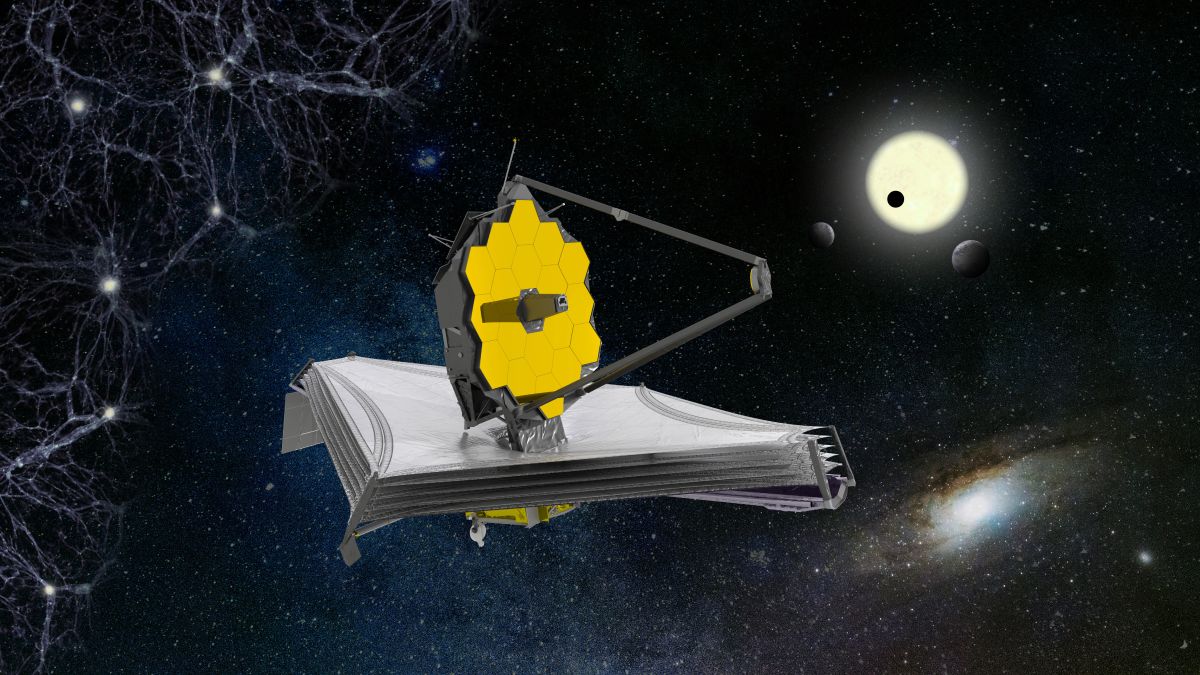The James Webb Space Telescope is one of the most powerful telescope ever launched into space. With increased sensitivity and resolution, it will be able to observe things the Hubble Space Telescope can’t. As the largest telescope ever launched into space, it is destined to change the way we look at the universe. The telescope will also make it possible to study objects in infrared that are not currently visible to our naked eye.
NASA’s James Webb Space Telescope
The James Webb Space Telescope was launched last December from French Guiana in South America. It is the largest and most powerful telescope ever launched into space. It is currently orbiting 1 million miles away from Earth, observing distant galaxies. The original goal of the telescope was to see how stars formed after the big bang. The mission team’s next task is to align its primary mirror segments to create one single light-collecting surface.
The Webb Space Telescope’s debut image was the SMACS 0723 galaxy cluster. It revealed a stunning view of the early universe. Other recent discoveries include a “selfie” of the observatory’s NIRCam instrument, which was built for engineering purposes. The two images of the same star are so detailed that the telescope can see the faint, distant galaxy in the background. However, the most dramatic discoveries are still yet to come.
The mission team was worried about the telescope’s reliability and the potential for a catastrophic failure. The telescope’s launch prompted a review board made up of outside experts. The review board recommended that the telescope undergo changes to ensure its safety. The telescope’s sun shield came loose, and the screws holding it in place popped loose. Despite these problems, the telescope was able to fulfill scientific objectives.
The mission will provide unprecedented views of the universe, and promises to study the formation of galaxies. It will also examine the planets orbiting distant stars. It will search for signs of habitability, and determine the chemical composition of their atmospheres. The mission is expected to provide new answers about the universe, as well as how the planets formed. The new telescope will allow scientists to study the origin of stars and galaxies, and the evolution of the universe.
The massive golden mirror of Webb’s first image is a spectacular example of the power of science instruments. The telescope is capable of capturing the faint light of galaxies forming in the infancy of the cosmos. The image, released by President Biden at a White House preview event, was the deepest ever captured by a telescope. Its scientists will continue to take long exposures of images captured by the space telescope.
Its optical design
The backplane of the James Webb Space Telescope (JWST) is made of composite laminate, which consists of multiple layers of epoxy and graphite. The pieces are connected by a composite backplane that rings like a metal pipe when tapped. The materials are also extremely lightweight. A backplane of composite laminate is also composed of Invar, a nickel steel alloy with low thermal expansion. The backplane supports the mirror figure against the stresses and strains of the launch process.
Although a major challenge is still left to resolve, the JWST team has been working to complete the mission’s optical design. They are now testing the telescope’s optical design in a vacuum chamber, which NASA had originally built for the Apollo moon lander. Two vendors are supplementing the liquid nitrogen system with liquid helium to achieve the proper alignment of the telescope’s lenses at 40 K.
The primary mirror of the JWST is composed of eighteen hexagonal segments. This design has proved successful in ground-based telescopes, including the twin Keck observatories in Hawaii. However, the JWST optical design poses a set of unique challenges that make it unique in space. For example, the telescope must operate within a few degrees of absolute zero, which poses a challenge to the mirror. Fortunately, the telescope’s five-layer sunshade deployed without issue after launch.
During the initial stages of the telescope’s development, the instruments have been contained in a house-sized pressure cooker, and the atmosphere inside is at a ten-billionth of the atmosphere. Helium is used to cool the interior, while vacuum pumps maintain the temperature at -250 degC. Unlike other space telescopes, JWST will take long exposures in the near-infrared wavelengths. It will be able to observe supernovae and galaxies forming.
While the Hubble Space Telescope is a relatively passive design, the JWST’s active optical control allows it to perform tasks that the Hubble did not. It is based on a segmented primary mirror, will be operated at cryogenic temperatures, and use an active control system. As the name suggests, JWST will require a very large collecting aperture, a stable PSF, and a large field of view. Detailed optical specifications are described in the report.
Its sensors
The four primary scientific instruments of the James Webb Space Telescope will provide incredible new views of the universe. The sensors, known as the Fine Guidance Sensors, will help the observatory find and lock onto targets. This image reveals the telescope’s imaging prowess. NASA has provided additional information on how the observatory acquires and locks on to targets. The sensors will soon be revealed to the public in less than a week.
The three main sensors of the James Webb Space Telescope are NIRCam, NIRISS, and MIRI. These instruments provide images in different wavelength ranges and resolutions. The NIRSpec sensor takes images in 1.1 microns. The images are then used to calibrate the spectrographs and imaging instruments on board. The imaging instruments onboard the telescope also perform measurements of subtle image distortions and alignments between sensors.
This image was created using the same red color palette as earlier Webb images. This image was taken without dithering, which is the process by which telescopes reposition themselves in between exposures. The center of stars in the photo appear black, despite their high brightness. The reason for this is that Webb’s sensors have become saturated. The overlapping frames of multiple exposures can be seen in the corners and edges of the image.
The sensors of the James Webb Space Telescope allow it to detect radiation that our eyes cannot detect. As a result, the images are more detailed than ever before. They will also show details of celestial bodies that Hubble could never see. The new images will show what the universe looked like 13 billion years ago, including the death of a binary star. It will also be possible to detect more distant objects and their atmospheres.
The sensors of the James Webb Space Telescope are designed to allow them to detect even fainter objects in the sky than Earth’s planets. This is possible because the spacecraft will be orbiting near the second Lagrange point, which is 1,500,000 kilometers (nearly 930,000 miles) from the sun. This is four times farther away than the moon’s orbit. While this would normally take the telescope years to orbit the Sun, the spacecraft’s combined gravitational pull will keep it close to Earth, making the data collection faster and more accurate.
Its augmented reality experience
The James Webb Space Telescope is now available as an augmented reality experience. The new technology uses 3-D images to explore the early universe, giving you an up-close look at the objects in that world. You can even walk around the telescope in 3D. The augmented reality experience is currently available for download on Apple’s App Store, Google Play, and Microsoft’s Bing. The new telescope has been delayed several times due to overly optimistic schedule projections and cost reporting. Ultimately, the project cost more than $10 billion.
The James Webb Space Telescope is due to launch into space in December 2021. A digital replica of the telescope has been developed by Google Arts & Culture, in partnership with NASA and Google. The James Webb Space Telescope app will give you a virtual tour of the telescope’s science operations and building. You can download the app for free from the Apple App Store. If you’d like to see more James Webb Space Telescope images, try out the James Webb Space Telescope app.
The James Webb Space Telescope Augmented Reality app is available for iOS users and lets you experience the observatory from anywhere. The app contains audio and video content and will let you place a full-sized virtual model of the telescope anywhere you are. This technology is just the latest example of how augmented reality is revolutionizing the way we experience the world. Just imagine being able to experience the world’s most advanced scientific instrument from anywhere.
The James Webb Space Telescope’s newest augmented reality experience has received widespread praise and several awards. The augmented reality app puts users in the middle of science concepts, including Newtonian gravity and the electromagnetic spectrum. The WebbVR app is available in English and Spanish, and is meant to be used for home VR users and in informal education settings. The technology is currently available for download and can be used for free, but it’s definitely worth downloading and testing.





